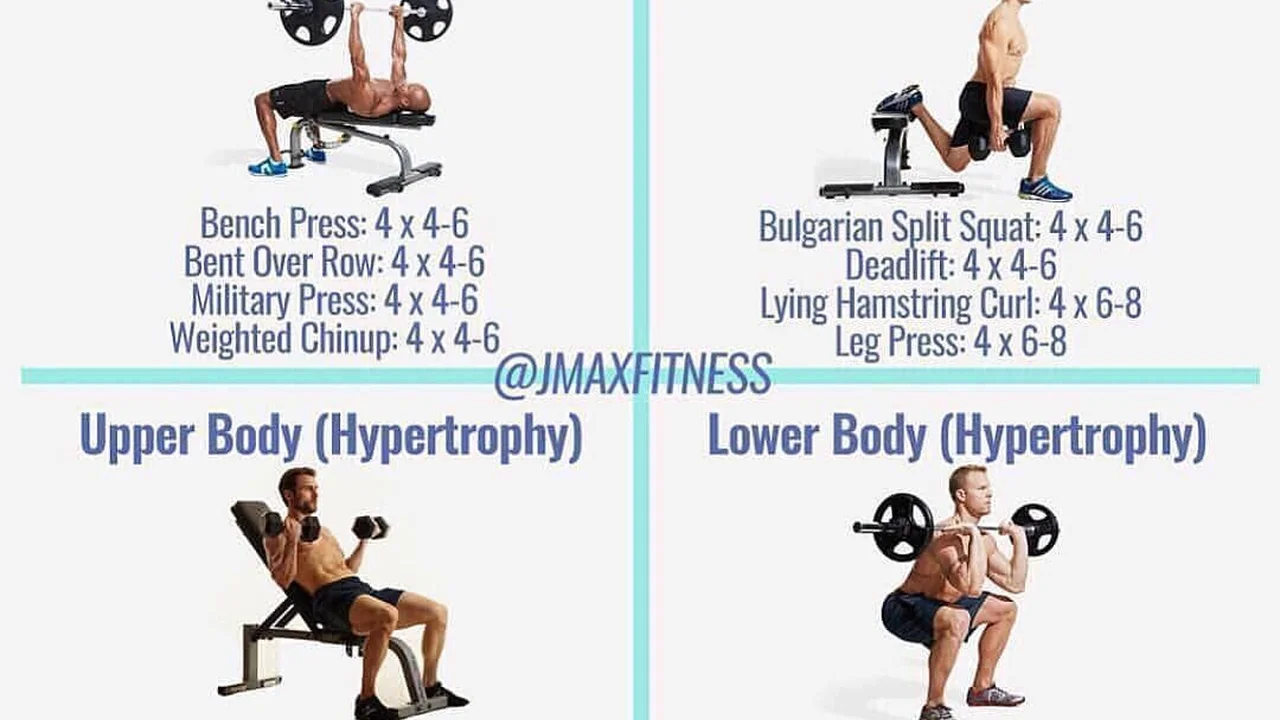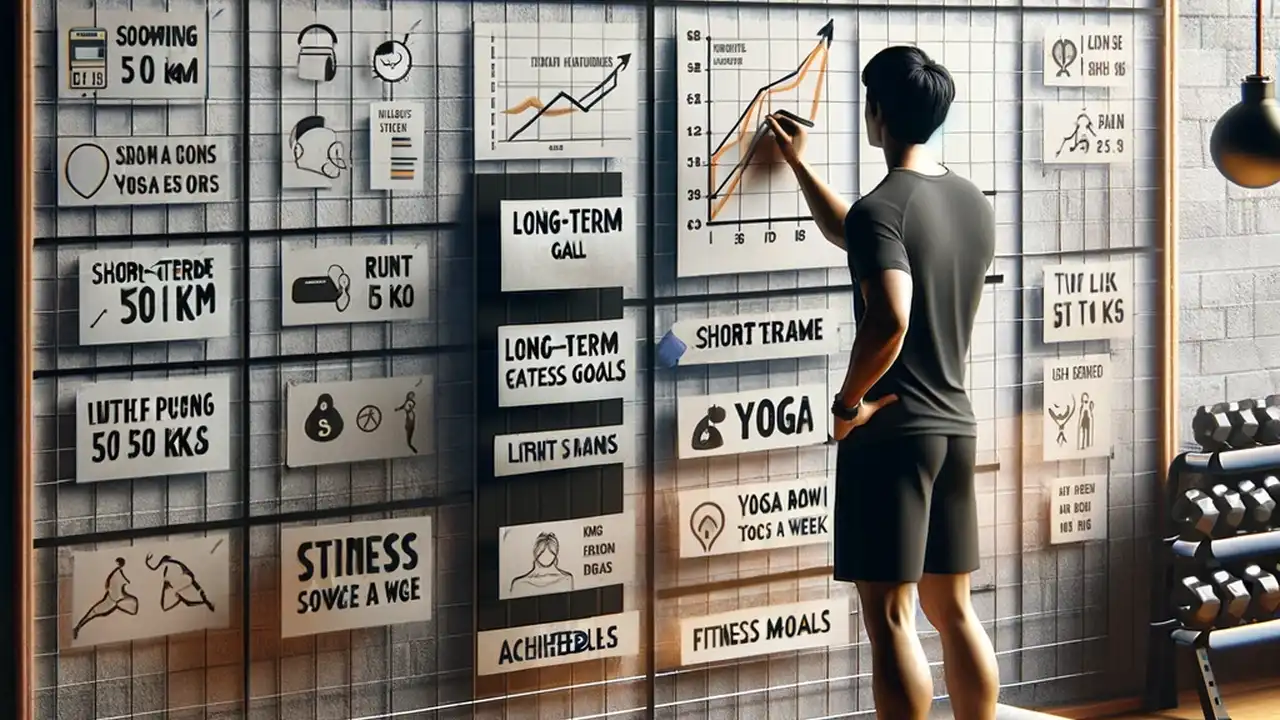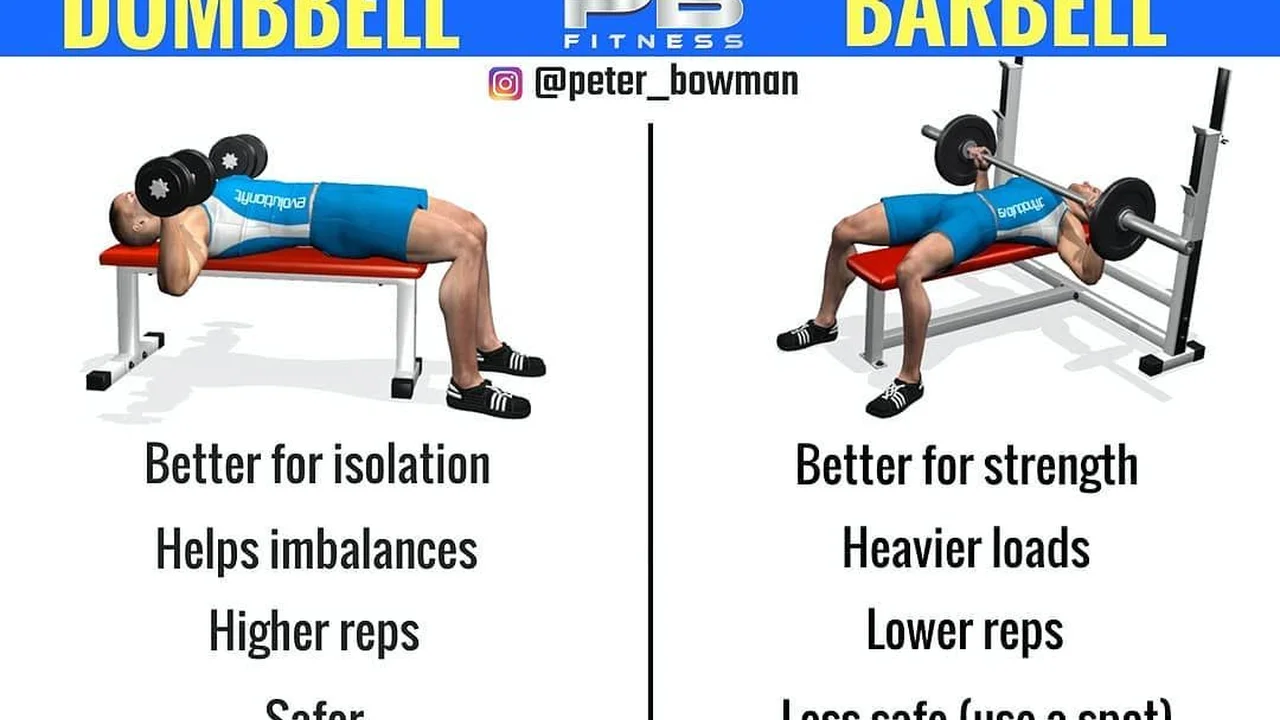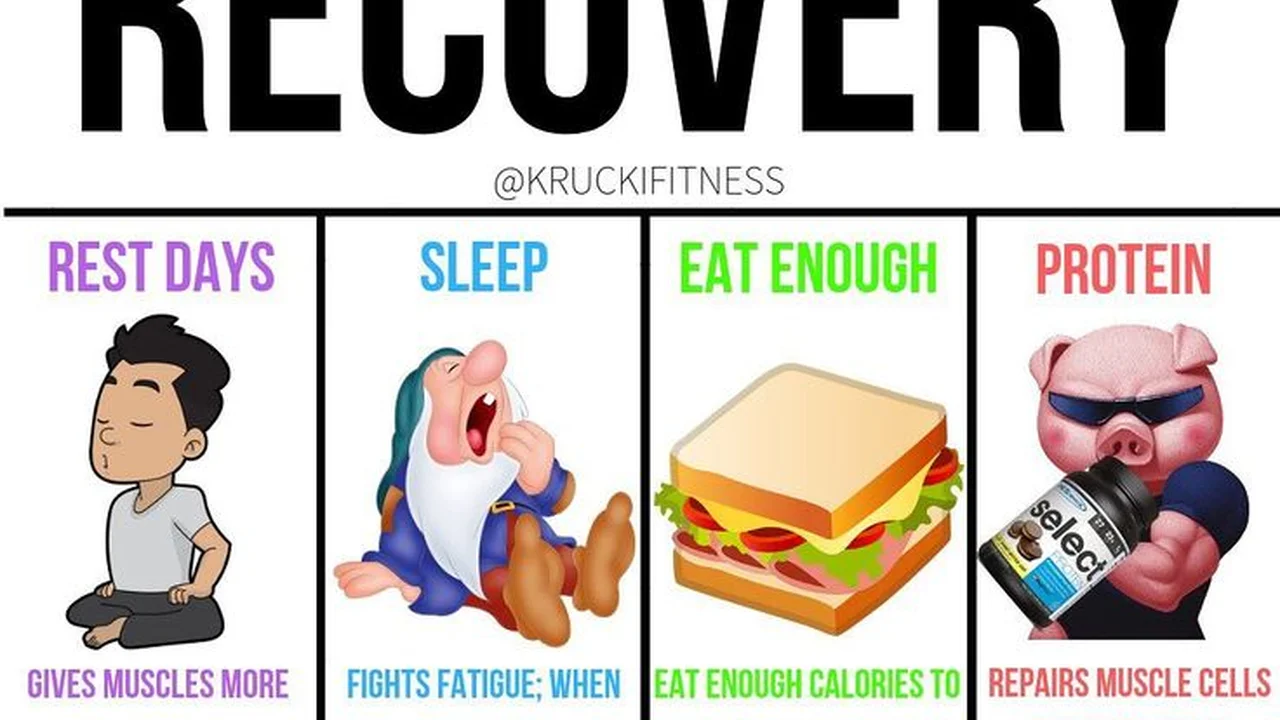Creating a Gym Split: The Ultimate Guide
Creating a well-structured gym split is crucial for intermediate lifters looking to maximize muscle growth, strength gains, and overall fitness. This guide provides a comprehensive overview of how to create the ultimate gym split, incorporating essential elements like training frequency, exercise selection, volume, and intensity. We'll also delve into specific product recommendations to enhance your workout experience and help you achieve your fitness goals. Let's dive in and craft a split that works for you!

Understanding Gym Splits and Training Frequency for Optimal Muscle Growth
Alright, let's talk gym splits. What *is* a gym split, anyway? Simply put, it's how you divide your workouts throughout the week, focusing on different muscle groups each session. The beauty of a split is that it allows you to give each muscle group adequate rest and recovery, which is essential for growth. Think of it like this: you wouldn't try to bake ten cakes at once in one oven, right? You'd space them out. Same principle applies to your muscles.
Now, figuring out the *best* training frequency for you depends on a few things: your experience level, your recovery ability, and your goals. As an intermediate lifter, you're probably past the point where hitting your whole body three times a week is optimal. You need more focused attention on individual muscle groups.
Here are a few popular gym split options, along with their pros and cons:
* **Bro Split (Training each muscle group once per week):** This is the classic "chest day," "back day," "leg day" approach. * **Pros:** Allows for high volume per muscle group, good for focusing on lagging areas. * **Cons:** Low frequency; some argue it's not optimal for muscle protein synthesis, can be time-consuming if you have long workouts. * **Upper/Lower Split (Training upper body twice a week, lower body twice a week):** This split divides your body into upper and lower segments. * **Pros:** Higher frequency than the bro split, more balanced approach. * **Cons:** Can be demanding on recovery if you're not careful with volume. * **Push/Pull/Legs (Training pushing muscles, pulling muscles, and legs on separate days):** This split groups muscles based on movement patterns. * **Pros:** Efficient, allows for good recovery between similar movement patterns. * **Cons:** Requires careful planning to avoid overtraining certain muscle groups (e.g., shoulders). * **Full Body (Training all major muscle groups in each workout):** While typically for beginners, can be adapted for intermediate lifters with modifications. * **Pros:** Very high frequency, good for overall strength development. * **Cons:** Requires careful attention to volume and intensity to avoid overtraining.For most intermediate lifters, an **Upper/Lower** or **Push/Pull/Legs** split is a solid choice. They offer a good balance of frequency and volume, allowing you to stimulate each muscle group effectively without overdoing it.
Exercise Selection The Best Compound and Isolation Movements for Muscle Hypertrophy
Okay, you've got your split. Now comes the fun part: picking the exercises! The key here is to focus on a combination of **compound exercises** and **isolation exercises**. Compound exercises work multiple muscle groups at once, allowing you to lift heavier weight and stimulate more overall muscle growth. Isolation exercises target specific muscles, helping you refine your physique and address any weaknesses.
Here are some must-have exercises for each muscle group:
* **Chest:** * **Compound:** Barbell Bench Press, Dumbbell Bench Press, Incline Dumbbell Press, Dips * **Isolation:** Dumbbell Flyes, Cable Flyes, Pec Deck Flyes * **Back:** * **Compound:** Barbell Rows, Pull-ups, Lat Pulldowns, T-Bar Rows, Deadlifts (can be considered a full-body exercise, but heavily targets the back) * **Isolation:** Dumbbell Rows, Face Pulls, Cable Rows, Rear Delt Flyes * **Legs:** * **Compound:** Squats (Back Squats, Front Squats), Leg Press, Romanian Deadlifts, Lunges * **Isolation:** Leg Extensions, Leg Curls, Calf Raises * **Shoulders:** * **Compound:** Overhead Press (Barbell or Dumbbell), Arnold Press * **Isolation:** Lateral Raises, Front Raises, Rear Delt Flyes * **Arms (Biceps & Triceps):** * **Biceps:** Barbell Curls, Dumbbell Curls, Hammer Curls, Concentration Curls * **Triceps:** Close-Grip Bench Press, Overhead Triceps Extensions, Triceps Pushdowns, SkullcrushersRemember, variety is key! Don't just stick to the same exercises week after week. Mix things up to keep your muscles guessing and prevent plateaus. Try different variations of exercises, like using dumbbells instead of a barbell, or changing the grip on a pull-up bar. Also, incorporate exercises that target often-neglected muscle groups like rear deltoids and rotator cuff muscles to prevent injuries.
Volume and Intensity Optimizing Sets Reps and Weight for Maximum Results
Now that you've chosen your exercises, let's talk about **volume** (the total amount of work you do) and **intensity** (how hard you work). These two factors are crucial for stimulating muscle growth.
As an intermediate lifter, you should be aiming for a moderate to high volume of work. This generally translates to around **10-20 sets per muscle group per week**. This can be spread out over multiple workouts, depending on your split.
For example, if you're doing an Upper/Lower split, you might do 5-10 sets for chest on your upper body day. If you're doing a Bro Split, you might do 15-20 sets for chest on chest day.
As for **reps**, the classic range for hypertrophy (muscle growth) is **8-12 reps**. However, don't be afraid to experiment with different rep ranges. Some sets in the 6-8 rep range can be great for building strength, while some sets in the 12-15 rep range can be good for metabolic stress and muscle endurance.
**Weight** is another important factor. You should be using a weight that allows you to reach the desired rep range with good form. The last few reps of each set should be challenging, but you shouldn't be sacrificing form to get them done. As a general rule of thumb, aim for a weight that's around 70-85% of your one-rep max (1RM).
Don't be afraid to use techniques like drop sets, supersets, and rest-pause sets to increase the intensity of your workouts. These techniques can help you push your muscles beyond their limits and stimulate more growth.
Rest and Recovery The Importance of Sleep Nutrition and Active Recovery
You can't just beat your body up in the gym and expect it to grow. **Rest and recovery** are just as important as training. When you lift weights, you're actually damaging your muscle fibers. It's during rest that your body repairs and rebuilds those fibers, making them bigger and stronger.
Here are some key aspects of rest and recovery:
* **Sleep:** Aim for at least 7-9 hours of sleep per night. Sleep is when your body produces the most growth hormone, which is essential for muscle growth and repair. * **Nutrition:** Eat a balanced diet that's rich in protein, carbohydrates, and healthy fats. Protein is the building block of muscle, so make sure you're getting enough of it (around 0.8-1 gram per pound of body weight per day). Carbohydrates provide energy for your workouts, and healthy fats are important for hormone production and overall health. * **Active Recovery:** Active recovery involves doing light activities like walking, stretching, or yoga on your rest days. This can help improve blood flow to your muscles and reduce soreness. Avoid doing intense exercise on your rest days, as this can hinder your recovery. * **Stress Management:** Chronic stress can negatively impact your recovery. Find healthy ways to manage stress, such as meditation, spending time in nature, or talking to a therapist.Listen to your body! If you're feeling overly fatigued or sore, take an extra rest day. It's better to take a day off than to push yourself too hard and risk injury.
Sample Gym Split Routines for Intermediate Lifters
Here are a couple of sample gym split routines that you can use as a starting point. Remember to adjust the exercises, sets, reps, and weight based on your own individual needs and goals.
**Option 1: Upper/Lower Split (4 days per week)** * **Monday: Upper Body** * Bench Press: 3 sets of 8-12 reps * Overhead Press: 3 sets of 8-12 reps * Barbell Rows: 3 sets of 8-12 reps * Pull-ups: 3 sets to failure * Lateral Raises: 3 sets of 12-15 reps * Bicep Curls: 3 sets of 10-15 reps * Triceps Pushdowns: 3 sets of 10-15 reps * **Tuesday: Lower Body** * Squats: 3 sets of 8-12 reps * Romanian Deadlifts: 3 sets of 10-15 reps * Leg Press: 3 sets of 12-15 reps * Leg Extensions: 3 sets of 15-20 reps * Leg Curls: 3 sets of 15-20 reps * Calf Raises: 3 sets of 15-20 reps * **Wednesday: Rest** * **Thursday: Upper Body** (Focus on different exercises or variations from Monday) * Incline Dumbbell Press: 3 sets of 8-12 reps * Arnold Press: 3 sets of 8-12 reps * Lat Pulldowns: 3 sets of 8-12 reps * Dumbbell Rows: 3 sets of 8-12 reps * Rear Delt Flyes: 3 sets of 12-15 reps * Hammer Curls: 3 sets of 10-15 reps * Skullcrushers: 3 sets of 10-15 reps * **Friday: Lower Body** (Focus on different exercises or variations from Tuesday) * Front Squats: 3 sets of 8-12 reps * Glute Bridges: 3 sets of 15-20 reps * Lunges: 3 sets of 10-12 reps per leg * Hamstring Curls: 3 sets of 15-20 reps * Standing Calf Raises: 3 sets of 15-20 reps * **Saturday: Rest** * **Sunday: Rest** **Option 2: Push/Pull/Legs (6 days per week)** * **Monday: Push (Chest, Shoulders, Triceps)** * Bench Press: 3 sets of 8-12 reps * Incline Dumbbell Press: 3 sets of 8-12 reps * Overhead Press: 3 sets of 8-12 reps * Lateral Raises: 3 sets of 12-15 reps * Triceps Pushdowns: 3 sets of 10-15 reps * Skullcrushers: 3 sets of 10-15 reps * **Tuesday: Pull (Back, Biceps)** * Barbell Rows: 3 sets of 8-12 reps * Pull-ups: 3 sets to failure * Lat Pulldowns: 3 sets of 8-12 reps * Face Pulls: 3 sets of 15-20 reps * Bicep Curls: 3 sets of 10-15 reps * Hammer Curls: 3 sets of 10-15 reps * **Wednesday: Legs** * Squats: 3 sets of 8-12 reps * Romanian Deadlifts: 3 sets of 10-15 reps * Leg Press: 3 sets of 12-15 reps * Leg Extensions: 3 sets of 15-20 reps * Leg Curls: 3 sets of 15-20 reps * Calf Raises: 3 sets of 15-20 reps * **Thursday: Push (Chest, Shoulders, Triceps)** (Focus on different exercises or variations from Monday) * Dumbbell Bench Press: 3 sets of 8-12 reps * Arnold Press: 3 sets of 8-12 reps * Front Raises: 3 sets of 12-15 reps * Close-Grip Bench Press: 3 sets of 10-15 reps * Overhead Triceps Extensions: 3 sets of 10-15 reps * **Friday: Pull (Back, Biceps)** (Focus on different exercises or variations from Tuesday) * T-Bar Rows: 3 sets of 8-12 reps * Dumbbell Rows: 3 sets of 8-12 reps * Cable Rows: 3 sets of 8-12 reps * Rear Delt Flyes: 3 sets of 15-20 reps * Concentration Curls: 3 sets of 10-15 reps * **Saturday: Legs** (Focus on different exercises or variations from Wednesday) * Front Squats: 3 sets of 8-12 reps * Glute Bridges: 3 sets of 15-20 reps * Lunges: 3 sets of 10-12 reps per leg * Hamstring Curls: 3 sets of 15-20 reps * Standing Calf Raises: 3 sets of 15-20 reps * **Sunday: Rest**Product Recommendations to Enhance Your Gym Experience and Muscle Growth
Alright, let's get into some gear! Having the right equipment can definitely make a difference in your workouts, improving your performance, recovery, and overall enjoyment.
Weightlifting Shoes for Squats and Deadlifts Stability
If you're serious about lifting heavy, especially squats and deadlifts, investing in a pair of **weightlifting shoes** is a game-changer. These shoes have a raised heel, which helps improve your ankle mobility and allows you to maintain a more upright torso position. This can lead to better form, increased stability, and the ability to lift heavier weight. Think of it as having a solid foundation for your house – you wouldn't build on sand, would you?
Here are a couple of recommendations:
* **Nike Romaleos 4:** These are a top-of-the-line weightlifting shoe, known for their exceptional stability and durability. They're a bit pricey (around $200), but they're worth the investment if you're serious about lifting. They feature a wide base and a secure strap to keep your foot locked in place. * **Adidas Adipower Weightlifting II:** Another excellent option, the Adipowers are known for their comfortable fit and responsive feel. They're also a bit more affordable than the Romaleos (around $180). They have a TPU midsole wedge for stability and a breathable upper.**Comparison:** The Romaleos are generally considered to be slightly more stable and durable, while the Adipowers are a bit more comfortable. Both are excellent choices, so it really comes down to personal preference.
**Usage:** Weightlifting shoes are primarily used for squats, deadlifts, and Olympic weightlifting movements. They're not ideal for running or other cardio activities.
Wrist Wraps for Bench Press and Overhead Press Support
**Wrist wraps** provide support and stability to your wrists during heavy pressing exercises like the bench press and overhead press. They help prevent wrist injuries and allow you to lift heavier weight with more confidence. Think of them as a safety net for your wrists.
Here are a couple of recommendations:
* **Rogue Fitness Wrist Wraps:** These are a popular choice among powerlifters and weightlifters. They're made from a durable elastic material and provide excellent support. They come in different lengths and stiffness levels, so you can choose the ones that best suit your needs. A pair will usually cost around $20-$30. * **Iron Bull Strength Wrist Wraps:** Another great option, these wraps are known for their comfortable fit and secure closure. They're also made from a high-quality elastic material. Expect to pay around $25-$35 for a pair.**Comparison:** Rogue wraps tend to be stiffer and provide more support, while Iron Bull wraps are a bit more comfortable and flexible. Again, it's a matter of personal preference.
**Usage:** Wrist wraps are used during any heavy pressing exercise where you feel like your wrists need extra support.
Resistance Bands for Warm-ups and Accessory Work
**Resistance bands** are a versatile tool that can be used for a variety of purposes, including warm-ups, accessory work, and mobility exercises. They're great for activating your muscles before a workout, improving your range of motion, and adding extra resistance to exercises like squats and push-ups. They're also super portable and affordable, making them a great addition to any gym bag.
Here are a couple of recommendations:
* **Serious Steel Fitness Resistance Bands:** These bands are known for their durability and consistent resistance. They come in a variety of sizes and resistance levels, so you can choose the ones that best suit your needs. A single band costs around $10-$30, depending on the resistance level, but you can also buy sets. * **Fit Simplify Resistance Loop Exercise Bands:** These are a more affordable option, and they're still a good quality. They come in a set of five bands with varying resistance levels. A set usually costs around $15-$20.**Comparison:** Serious Steel bands are more durable and provide more consistent resistance, while Fit Simplify bands are more affordable and convenient for beginners.
**Usage:** Resistance bands can be used for a wide variety of exercises, including:
* **Warm-ups:** Band pull-aparts, face pulls, monster walks * **Accessory work:** Banded squats, banded push-ups, banded rows * **Mobility:** Shoulder dislocations, hip flexor stretchesProtein Powder for Post-Workout Recovery and Muscle Repair
While you should always prioritize whole foods, **protein powder** can be a convenient way to supplement your protein intake, especially after a workout. It helps with muscle recovery and repair, and it can also be a helpful tool for meeting your daily protein goals.
Here are a couple of recommendations:
* **Optimum Nutrition Gold Standard 100% Whey:** This is a classic protein powder that's been around for years. It's known for its great taste, mixability, and effectiveness. It's a blend of whey protein isolate, concentrate, and peptides. A 5-pound tub typically costs around $60-$70. * **Transparent Labs 100% Whey Protein Isolate:** This is a higher-quality protein powder that contains only whey protein isolate. It's lower in carbs and fat than whey protein concentrate, making it a good choice for people who are watching their macros. A tub usually costs around $50-$60.**Comparison:** Optimum Nutrition is more affordable and widely available, while Transparent Labs is a higher-quality protein with a cleaner ingredient list.
**Usage:** Protein powder is typically mixed with water or milk and consumed after a workout. It can also be added to smoothies or other recipes.
Creatine Monohydrate for Strength and Power
**Creatine monohydrate** is one of the most well-researched and effective supplements for increasing strength and power. It works by increasing the amount of creatine phosphate in your muscles, which helps you produce more energy during high-intensity exercise. It's also very affordable and safe.
Here are a couple of recommendations:
* **Optimum Nutrition Creatine Monohydrate:** This is a high-quality creatine monohydrate powder that's micronized for better absorption. A tub typically costs around $20-$30. * **BulkSupplements.com Creatine Monohydrate:** This is a more affordable option that's still a good quality. It's also micronized. A kilogram (2.2 pounds) usually costs around $25-$35.**Comparison:** Both are excellent choices, and the main difference is the price. BulkSupplements.com is generally more affordable.
**Usage:** Creatine monohydrate is typically taken in a daily dose of 3-5 grams. It can be mixed with water, juice, or protein powder.
Progress Tracking Monitoring Your Gains and Adjusting Your Routine
Finally, don't forget to **track your progress!** This is crucial for seeing how far you've come and identifying areas where you need to improve. Keep a workout journal or use a fitness tracking app to record your exercises, sets, reps, and weight. Also, take progress photos and measurements regularly. This will help you stay motivated and make sure you're on track to achieve your goals.
If you're not seeing the results you want, don't be afraid to adjust your routine. Experiment with different exercises, sets, reps, and weight. Also, make sure you're getting enough rest and nutrition. The key is to find what works best for you and stick with it. Remember, consistency is key!
:max_bytes(150000):strip_icc()/277019-baked-pork-chops-with-cream-of-mushroom-soup-DDMFS-beauty-4x3-BG-7505-5762b731cf30447d9cbbbbbf387beafa.jpg)






